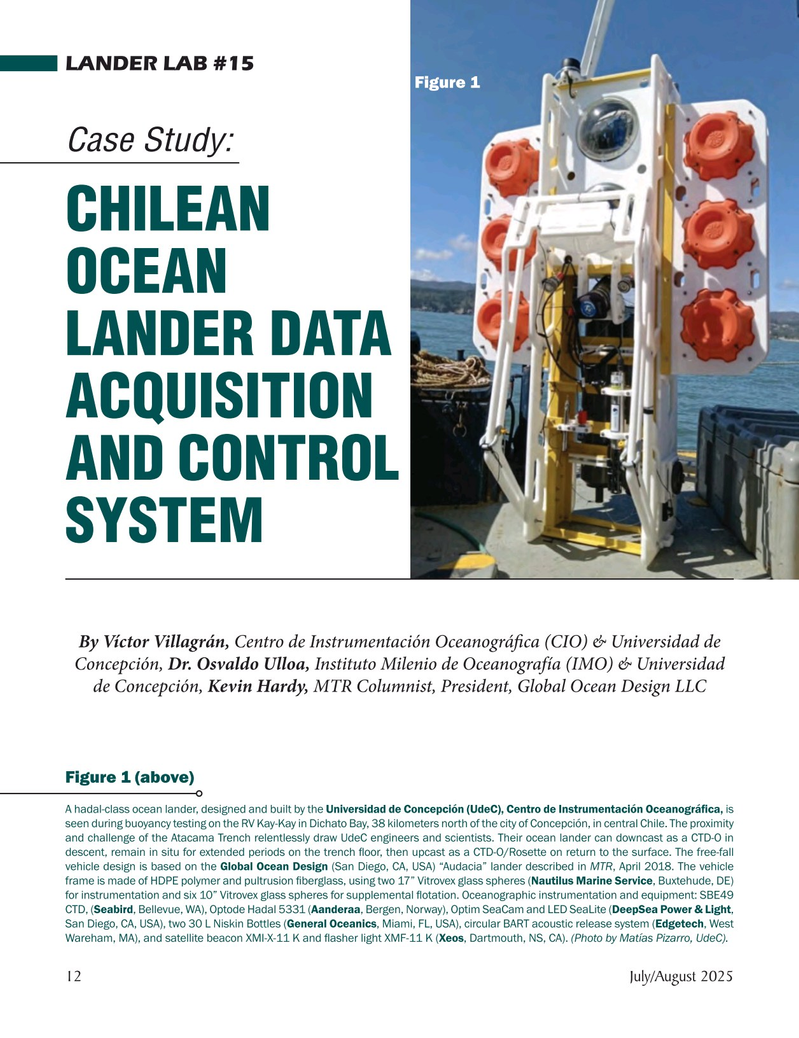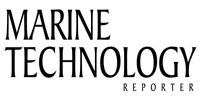
Page 12: of Marine Technology Magazine (July 2025)
Read this page in Pdf, Flash or Html5 edition of July 2025 Marine Technology Magazine
LANDER LAB #15
Figure 1
Case Study:
CHILEAN
OCEAN
LANDER DATA
ACQUISITION
AND CONTROL
SYSTEM
By Víctor Villagrán, Centro de Instrumentación Oceanográf ca (CIO) & Universidad de
Concepción, Dr. Osvaldo Ulloa, Instituto Milenio de Oceanografía (IMO) & Universidad de Concepción, Kevin Hardy, MTR Columnist, President, Global Ocean Design LLC
Figure 1 (above)
A hadal-class ocean lander, designed and built by the Universidad de Concepción (UdeC), Centro de Instrumentación Oceanográ? ca, is seen during buoyancy testing on the RV Kay-Kay in Dichato Bay, 38 kilometers north of the city of Concepción, in central Chile. The proximity and challenge of the Atacama Trench relentlessly draw UdeC engineers and scientists. Their ocean lander can downcast as a CTD-O in descent, remain in situ for extended periods on the trench ? oor, then upcast as a CTD-O/Rosette on return to the surface. The free-fall vehicle design is based on the Global Ocean Design (San Diego, CA, USA) “Audacia” lander described in MTR, April 2018. The vehicle frame is made of HDPE polymer and pultrusion ? berglass, using two 17” Vitrovex glass spheres (Nautilus Marine Service, Buxtehude, DE) for instrumentation and six 10” Vitrovex glass spheres for supplemental ? otation. Oceanographic instrumentation and equipment: SBE49
CTD, (Seabird, Bellevue, WA), Optode Hadal 5331 (Aanderaa, Bergen, Norway), Optim SeaCam and LED SeaLite (DeepSea Power & Light,
San Diego, CA, USA), two 30 L Niskin Bottles (General Oceanics, Miami, FL, USA), circular BART acoustic release system (Edgetech, West
Wareham, MA), and satellite beacon XMI-X-11 K and ? asher light XMF-11 K (Xeos, Dartmouth, NS, CA). (Photo by Matías Pizarro, UdeC).
12 July/August 2025
MTR #5 (1-17).indd 12 MTR #5 (1-17).indd 12 7/29/2025 2:28:53 PM7/29/2025 2:28:53 PM

 11
11

 13
13
